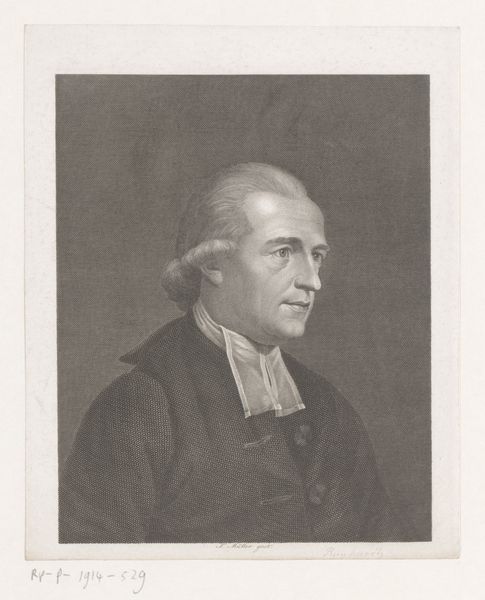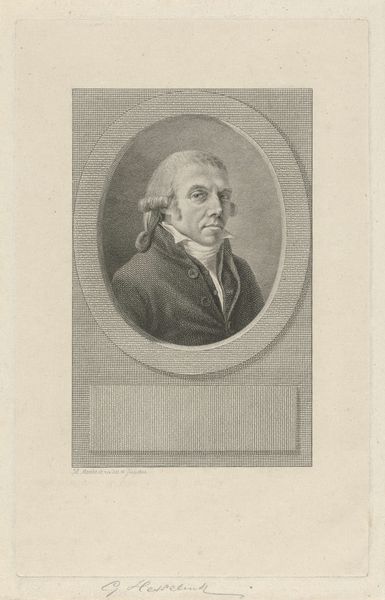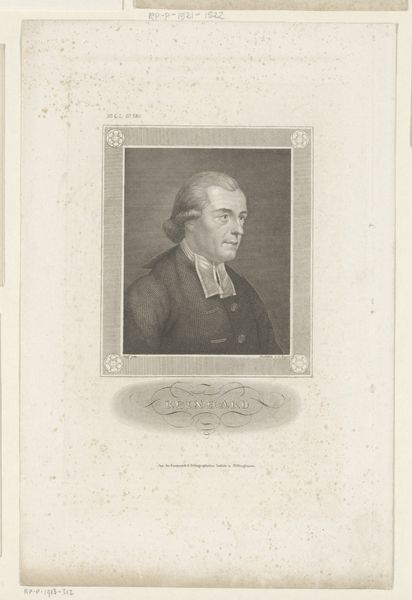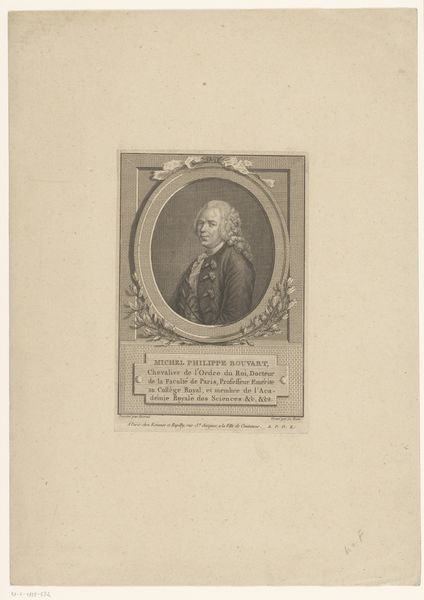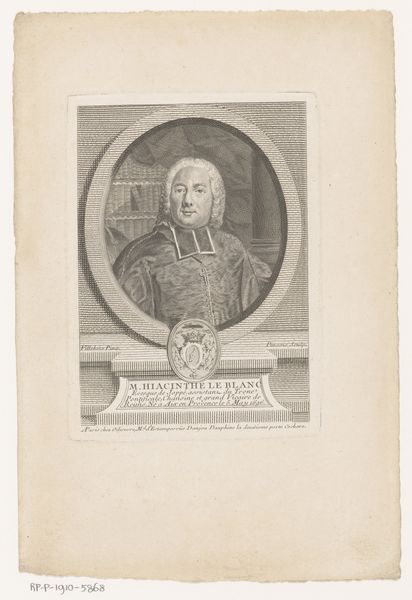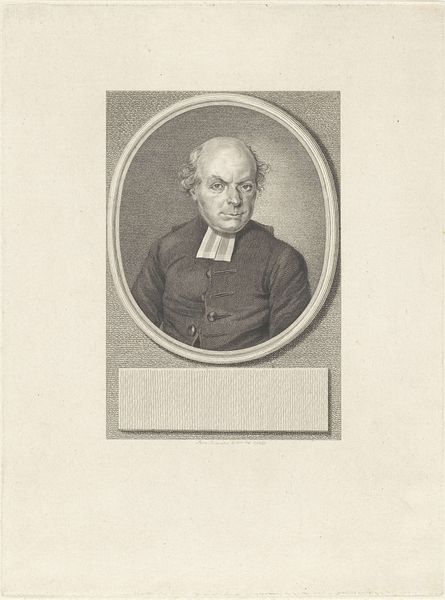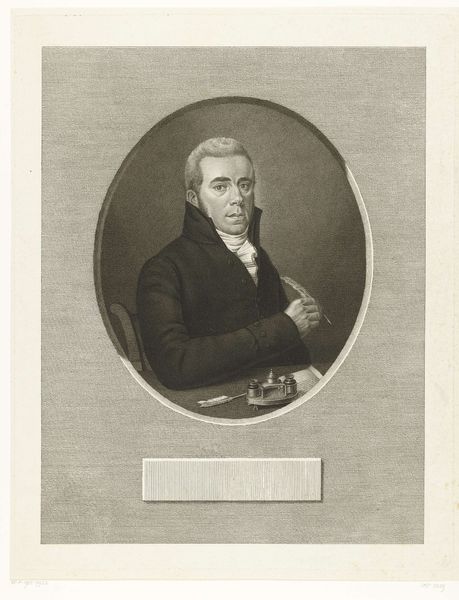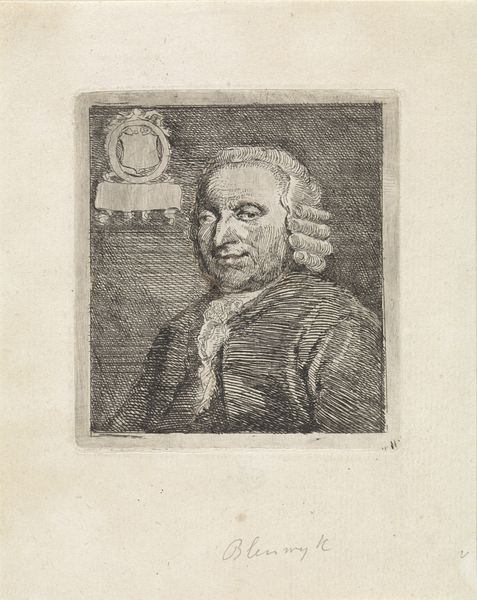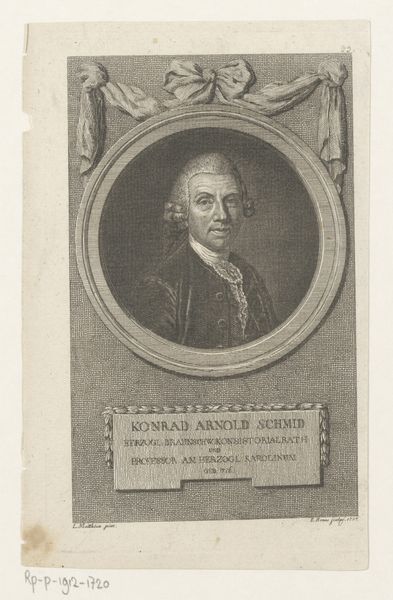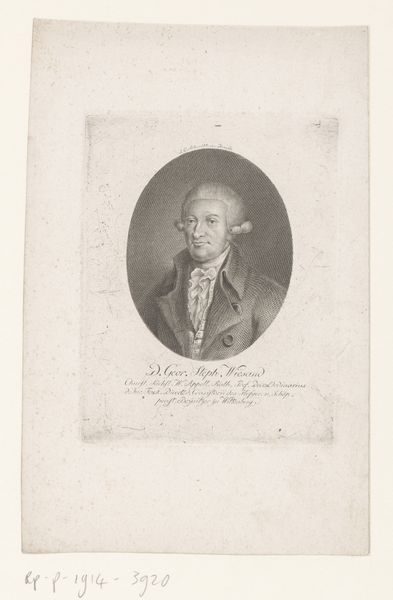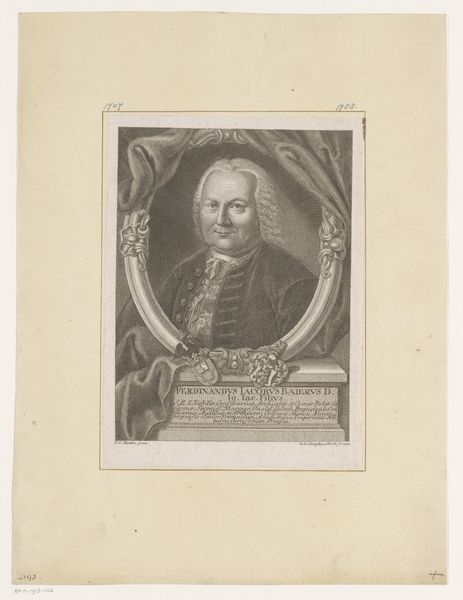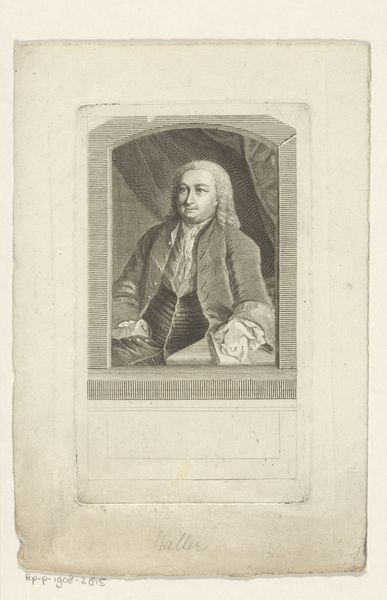
print, engraving
#
portrait
#
neoclacissism
# print
#
academic-art
#
engraving
Dimensions: height 397 mm, width 241 mm
Copyright: Rijks Museum: Open Domain
This portrait of Rudolph Jänisch was made with etching and engraving by Gottfried Arnold Lehman. These printmaking processes, while seemingly simple, involved considerable labor. First, a metal plate was coated in a waxy ground, through which Lehman would have scratched his design with a needle, exposing the metal. When dipped in acid, the exposed lines would be bitten into the plate. Engraving, on the other hand, uses a tool called a burin to directly cut lines into the metal. The fine details and tonal variations you see here demonstrate Lehman's skill in controlling the depth and thickness of the lines, a time-consuming process that required precision and expertise. The resulting plate was then inked and pressed onto paper, transferring the image. The beauty of printmaking lies in its reproducibility, allowing for wider distribution of images. Here, the social context is key: printmaking democratized portraiture, making it accessible to a broader audience beyond the wealthy elite who could afford painted portraits. Ultimately, understanding the labor-intensive processes behind this seemingly straightforward image allows us to appreciate the artistry and social impact of printmaking in the 18th century.
Comments
No comments
Be the first to comment and join the conversation on the ultimate creative platform.
